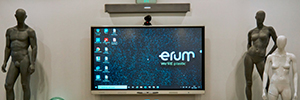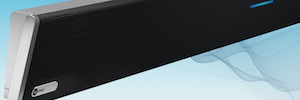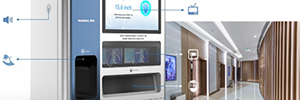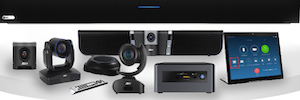Laser Phosphor Screens (LPD): higher image quality and lower power consumption
The Laser Phosphor Screen (LPD) is a revolutionary way of creating images developed by the American company Prysm. This innovative technology allows you to create large screens with high image quality and a 75% less consumption. Prysm has captured its advanced laser phosphor technology in the new TD1 modules that allow to achieve clear and bright images in any environment.
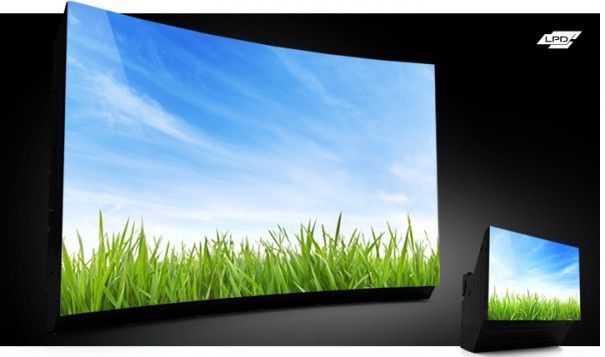 The Laser Phosphor Screen (LPD) is a revolutionary way of creating images developed by the American company Prysm. This innovative technology allows you to create large screens with high image quality and a 75% less consumption. Prysm LPD uses a laser motor that throws a beam of modulated rays on a phosphor screen. These laser diodes use, as in optical drives, small mirrors to distribute the laser beam throughout the screen. The projection surface is a layer of phosphorus that is inserted into a stable structure of glass and polymers that emit red luminosity, green or light blue responding quickly to the laser. Unlike other technologies that lose luminosity with filters and layers, LPD uses patent laser and phosphor panel to create high resolution and brightness images.
The Laser Phosphor Screen (LPD) is a revolutionary way of creating images developed by the American company Prysm. This innovative technology allows you to create large screens with high image quality and a 75% less consumption. Prysm LPD uses a laser motor that throws a beam of modulated rays on a phosphor screen. These laser diodes use, as in optical drives, small mirrors to distribute the laser beam throughout the screen. The projection surface is a layer of phosphorus that is inserted into a stable structure of glass and polymers that emit red luminosity, green or light blue responding quickly to the laser. Unlike other technologies that lose luminosity with filters and layers, LPD uses patent laser and phosphor panel to create high resolution and brightness images. 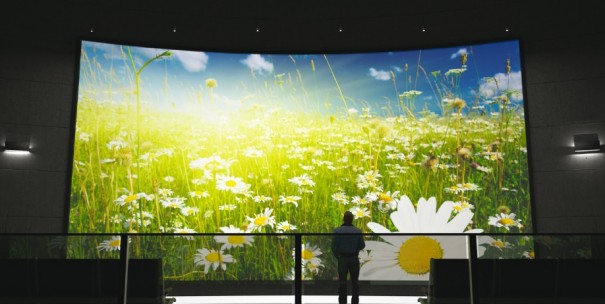
 TD1, the modular solution Prysm has captured its advanced laser phosphor technology in the new TD1 modules. This td1 modular solution is based on five key components to achieve clear and bright images in any environment. The TD1 module is the heart of the system. It consists of three parts: the match panel, the laser engine, and the laser processor. It is designed to be lightweight and easy to install and configure. With a resolution of 320×240 pixels and 25” diagonally, TD1 modules generate great dynamic images, that allow us a perfect vision for almost any distance and angle of view. The difficulty of calibrating large format screens requires hours of expensive adjustment in both installation and system maintenance. Prysm's solution to this challenge is the IP1 image processor. It supports all video signals and graphic formats, sends the content to the screen in addition to providing control, monitoring and calibration. In addition, multiple image processors can be bound, to create large pantalas. As for the screen control software that incorporates this prysm solution, allows you to quickly create a configuration of the signal you receive, through the adjustment of parameters such as noise reduction, adjusting edges, dynamic brightness, color temperature… An additional advantage of this prysm proposal is that this technology reduces the heat output of the equipment in such a way that it does not need ventilation. Unlike other devices, the power requirement is very low, maintaining a low temperature of use, which translates into great energy savings. likewise, its robust electrical system allows to feed in the form of a loop from the first PSU to 4 Additional PSUs (thus configuring up to 5) from the first power outlet. From the aesthetic point of view, TD1 modules can be manufactured with a customizable framework, quickly adjusting to the chosen configuration.
TD1, the modular solution Prysm has captured its advanced laser phosphor technology in the new TD1 modules. This td1 modular solution is based on five key components to achieve clear and bright images in any environment. The TD1 module is the heart of the system. It consists of three parts: the match panel, the laser engine, and the laser processor. It is designed to be lightweight and easy to install and configure. With a resolution of 320×240 pixels and 25” diagonally, TD1 modules generate great dynamic images, that allow us a perfect vision for almost any distance and angle of view. The difficulty of calibrating large format screens requires hours of expensive adjustment in both installation and system maintenance. Prysm's solution to this challenge is the IP1 image processor. It supports all video signals and graphic formats, sends the content to the screen in addition to providing control, monitoring and calibration. In addition, multiple image processors can be bound, to create large pantalas. As for the screen control software that incorporates this prysm solution, allows you to quickly create a configuration of the signal you receive, through the adjustment of parameters such as noise reduction, adjusting edges, dynamic brightness, color temperature… An additional advantage of this prysm proposal is that this technology reduces the heat output of the equipment in such a way that it does not need ventilation. Unlike other devices, the power requirement is very low, maintaining a low temperature of use, which translates into great energy savings. likewise, its robust electrical system allows to feed in the form of a loop from the first PSU to 4 Additional PSUs (thus configuring up to 5) from the first power outlet. From the aesthetic point of view, TD1 modules can be manufactured with a customizable framework, quickly adjusting to the chosen configuration. 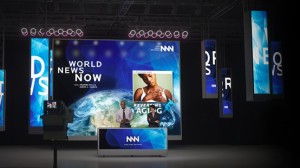 Eco-efficient technology The new eco-efficient LPD technology, which is behind Prysm's TD1 modules, combines low power consumption with vivid images of high quality and clarity from any viewing angle. Its phosphor panel on which the system is based is a layered design on a rigid glass or a polymer structure. When stimulated through the laser engine, phosphor emits green pixels, red and blue, very close to the surface, without any image filter that consumes electricity. Screen broadcast technology, offers the best viewing angle (usually twice the LCDs and plasmas), no pixel burning failures. For its part, the laser engine, created from a solid-state laser diode system (similar to Blu-ray), generates a series of modulated laser beams that stimulate the phosphor panel. To completely cover the screen area with lightning, are directed through mirrors, to create the number of image lines. Combining the 240Hz refresh rate, the result offers great quality, no image fliqueo or motion blur effect. The brain system is an intelligent technology laser processor that drives the laser engine with the precision of on and off, as well as its intensity. In addition, increases system efficiency by turning off the laser when the screen is black, set the color and place each pin. Thanks to the low consumption of laser motor, this device enables long screen life. last, note that these Prysm solutions based on LPD technology are distributed in Spain by Crambo Visuales.
Eco-efficient technology The new eco-efficient LPD technology, which is behind Prysm's TD1 modules, combines low power consumption with vivid images of high quality and clarity from any viewing angle. Its phosphor panel on which the system is based is a layered design on a rigid glass or a polymer structure. When stimulated through the laser engine, phosphor emits green pixels, red and blue, very close to the surface, without any image filter that consumes electricity. Screen broadcast technology, offers the best viewing angle (usually twice the LCDs and plasmas), no pixel burning failures. For its part, the laser engine, created from a solid-state laser diode system (similar to Blu-ray), generates a series of modulated laser beams that stimulate the phosphor panel. To completely cover the screen area with lightning, are directed through mirrors, to create the number of image lines. Combining the 240Hz refresh rate, the result offers great quality, no image fliqueo or motion blur effect. The brain system is an intelligent technology laser processor that drives the laser engine with the precision of on and off, as well as its intensity. In addition, increases system efficiency by turning off the laser when the screen is black, set the color and place each pin. Thanks to the low consumption of laser motor, this device enables long screen life. last, note that these Prysm solutions based on LPD technology are distributed in Spain by Crambo Visuales.
[youtube]HTTP://www.youtube.com/watch?v=icaoTxNxoyA[/youtube]
You liked this article?
Subscribe to our RSS feed And you won't miss anything.
• section: Uncategorized




